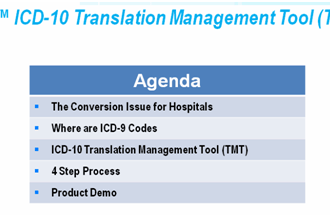Physicians are incorporating iPads and other mobile devices into their practices at an unprecedented pace. A 2012 study conducted by Manhattan Research, involving 3,015 U.S. practitioners in over 25 specialties, revealed that a remarkable 62% of doctors now utilize these devices – nearly doubling the adoption rate since 2011.
Physicians are incorporating iPads and other mobile devices into their practices at an unprecedented pace. A 2012 study conducted by Manhattan Research, involving 3,015 U.S. practitioners in over 25 specialties, revealed that a remarkable 62% of doctors now utilize these devices – nearly doubling the adoption rate since 2011.
Recently, I read an article in the N.Y. Times exploring this trend and its potential impacts on the future of Medicine. The piece notes that the proliferation of mobile devices has created something of a “generational divide” in the medical field. It contends that while most younger doctors enthusiastically embrace the digital revolution, some older practitioners have a serious concern – namely, that the growing focus on technology may erode the “human connection” historically at the foundation of the doctor-patient relationship.
This is an issue worthy of discussion. And certainly, technology is no substitute for a caring and engaged bedside manner. But as a leading provider of healthcare imaging applications for iPads and other devices, we at Carestream are convinced that when properly employed, tablet technology has great potential to actually strengthen the doctor-patient relationship.
Our own Vue Motion, FDA cleared for use on iPads, is a good example. It’s a zero-footprint viewer that provides physicians with easy and intuitive access to patient images and exam data on mobile devices. Vue Motion benefits the physician-patient relationship in many ways.
For example, consider this scenario – one that can really shake a patient’s confidence: the individual has been sent for X-rays and returns to the primary care physician to learn the results. But the doctor begins this follow-up visit by leafing slowly the patient’s folder, intently studying various documents. This goes on for some time. The patient begins to wonder – is the doctor reading my test results for the first time? Or worse yet, is he trying to remember my previous appointment and the details of my health problem? I’ve been in this very situation myself more than once, and it made me quite uneasy about where I stood on the doctor’s priority list.
With Vue Motion it’s a whole different story. The images and report data aren’t in a folder, on a CD, or on a piece of film somewhere. They’re right at the doctor’s fingertips, instantly accessible on a web-enabled device, with no download required.
The intuitive user interface requires no special training, so it’s as simple as opening up a film jacket and displaying the critical information. This makes it fast and easy for the physician to review the patient’s images and clinical portfolio – earlier in the day or just prior to the appointment – and enter the exam room in full command of the situation and its details. This helps maximize the patient’s trust and confidence.
In addition, Vue Motion is an overall time-saver and productivity booster, allowing the doctor to spend more time with patients. This is highly beneficial in strengthening the doctor-patient bond. Here’s an insightful article by Dr. Suzanne Koven in The Boston Globe that focuses on how that extra time can dramatically elevate the quality of care.
Vue Motion also has great potential to improve doctor-patient communication. Physicians and patients can now view diagnostic images together in the office or at bedside. This “visual aid” allows the doctor to explain more clearly and give the patient a fuller understanding of his or her condition. Finally, Vue Motion makes it easy for physicians to collaborate with other clinicians, across town or across the country, to raise the both the standard of care and patient satisfaction.
Putting digital healthcare information in the patient’s hands is another way to strengthen the patient-provider relationship. Our MyVue* offering lets doctors empower patients to play an active and important role in their own care. When patients have x-rays taken, they can then go online in the comfort of their own homes and view those images. Not long after, they can read the radiologist’s report as well. All data remains secure and confidential.
Moreover, MyVue allows the patient to share their images and reports with their primary-care doctor, specialists, or healthcare facilities. They simply authorize the selected individuals to log in and view their images. And, they can revoke that authorization at any time – so they always feel that they’re in control.
With MyVue, patients feel included and trusted by their doctors. In fact, it lets them partner with their doctors in the management of their healthcare – and further strengthens the physician-patient bond.
And how is MyVue going over with patients? A recent case study showed 50% patient engagement, with patients actively using and sharing their healthcare information. This was supported by an implementation combining simple technology, intuitive design and appropriate education.
As physicians’ use of iPads and other devices continues to grow, I believe we’ll be seeing an example of how technology can actually serve to support the vital human connection at the core of quality care.
*Available February 2013
![]()






